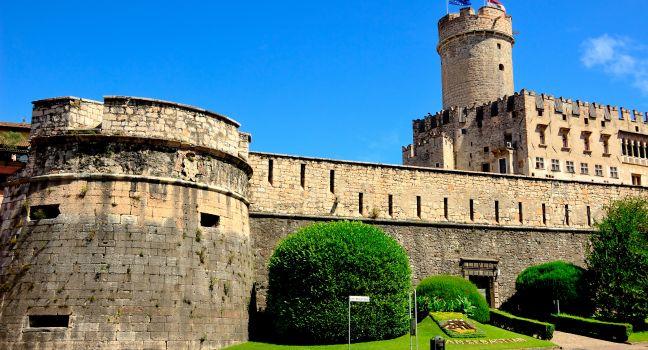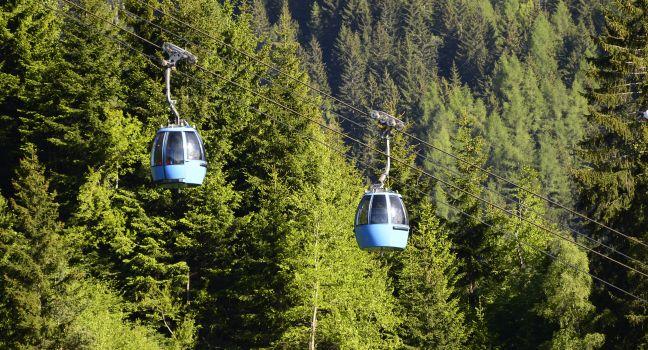At 7,346 feet, Passo Pordoi is the highest surface-road pass in the Dolomites. It connects Arabba, in Val Cordevole (Province of Belluno), with Canazei, in Val di Fossa (Province of Trento). Views from the top include the Sassolungo and Sella group of mountains, and even the Marmolada Glacier. There are several hotels and a ski school located at the pass, as well as some souvenir shops, restaurants, and snack carts. While the hotels are not glamorous, some do offer half-board packages at reasonable rates. The road up to the pass from Canazei has a few scenic and picnic pull-offs, plus 28 hairpin turns.
Skiing is available year-round. The most popular winter skiing areas are Belvedere and Sella Ronda, and much of the area is part of the Dolomiti Superski package. Even if the road for the pass is closed, many of the cable cars in neighboring valley towns will be running to various summits.
From Passo Pordoi you can get a cable car (May through October) to the Sass Pordoi, often called the Terrazza delle Dolomiti (Terrace of the Dolomites). At more than 9,100 feet, it offers myriad hiking trails and vie ferrate with varying degrees of difficulty (none of which are easy), leading to rifugi and the region's other peaks and passes.





